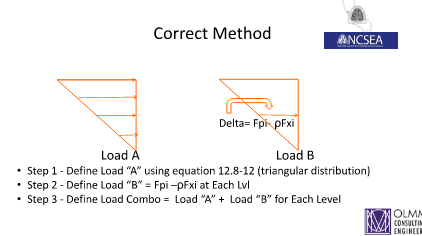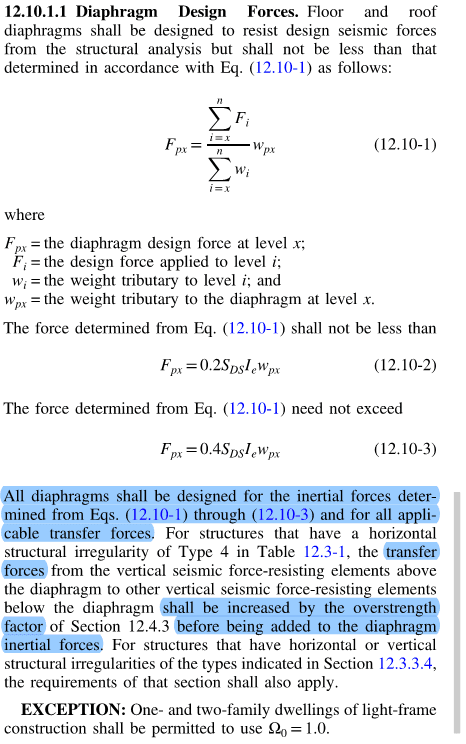Hello,
I am working on a project in which I am trying to transfer about 50 kips of seismic load into a concrete shear wall. My question is with regards to the collector design forces. I have calculated the maximum force of the (3) possible forces as per Section 12.10.2.1. However, the force associated with exception #1 states that the forces calculated above need not exceed those calculated using the load combinations of Section 12.4.2.3 with seismic forces determined by Equation 12.10-3. My seismic design category is C, and thus rho = 1. Therefore, this exception ends up governing. But I am skeptical to use the exception to my benefit since it results in a force that is lower than what you would calculate using the Equivalent Lateral Force Procedure. Why would the code allow you to design the collector for forces less than those of the ELF?
As a separate question, would the amplified forces also apply to the diaphragm to collector connection? Or just to the collector design itself and its connection to the lateral force resisting element?
Thanks for your input!
I am working on a project in which I am trying to transfer about 50 kips of seismic load into a concrete shear wall. My question is with regards to the collector design forces. I have calculated the maximum force of the (3) possible forces as per Section 12.10.2.1. However, the force associated with exception #1 states that the forces calculated above need not exceed those calculated using the load combinations of Section 12.4.2.3 with seismic forces determined by Equation 12.10-3. My seismic design category is C, and thus rho = 1. Therefore, this exception ends up governing. But I am skeptical to use the exception to my benefit since it results in a force that is lower than what you would calculate using the Equivalent Lateral Force Procedure. Why would the code allow you to design the collector for forces less than those of the ELF?
As a separate question, would the amplified forces also apply to the diaphragm to collector connection? Or just to the collector design itself and its connection to the lateral force resisting element?
Thanks for your input!


